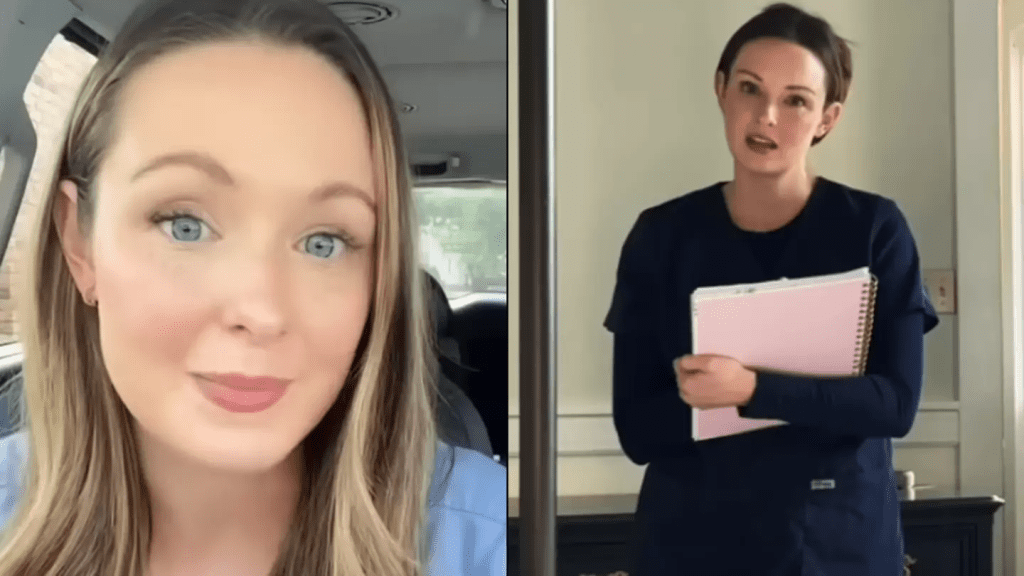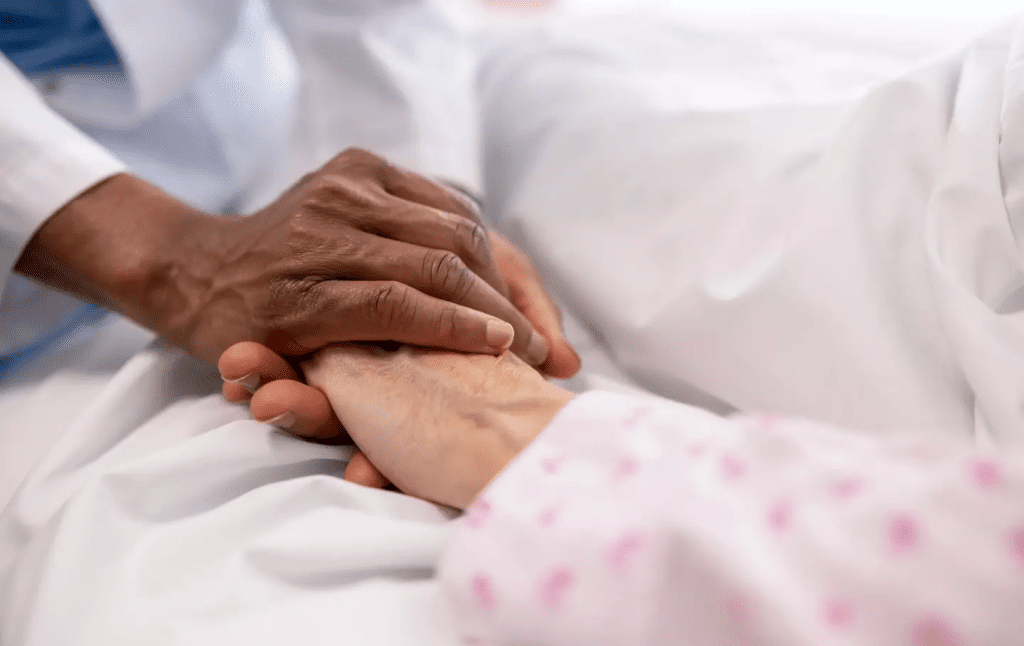Facing d*ath is one of the most profound and challenging experiences any of us will go through. For many, the thought of leaving this life is terrifying, which is why those who dedicate their lives to end-of-life care often provide not only comfort but also clarity about what happens in our final moments. Among them, one hospice nurse, Hadley Vlahos, has recently gained widespread praise for the compassion and empathy she shows toward patients who experience visions of deceased loved ones as they near the end.
The Phenomenon: Seeing Deceased Loved Ones

It’s not uncommon for people approaching the end of their lives to report vivid experiences of seeing deceased family members. These moments often bring comfort to the patient but can bewilder those around them. Some dismiss such visions as hallucinations or a result of the brain shutting down, but for hospice nurse Hadley Vlahos, these encounters are something far more meaningful.
Hadley, also known as @nurse.hadley on social media, has gained a large following by sharing heartfelt and candid stories about her work in hospice care. Her approach to patients who experience these visions has resonated deeply with viewers. Instead of dismissing their experiences, she embraces them with empathy and validation.
How Hadley Responds to Patients’ Visions
In one of her recent viral videos, Hadley shared her response when a patient asked if she could also see the vision of their deceased loved one. Rather than shutting down their experience, she replied, “I don’t [see them], but I believe you.” This simple yet profound response highlights her deep understanding of what patients need in those fragile moments—validation, comfort, and the reassurance that they are not alone.
Hadley’s empathetic reaction struck a chord with many viewers. One commenter wrote, “This is what compassionate hospice work looks like. The world needs more people like you. Thank you for easing the transition.” Others shared personal stories of similar experiences with their loved ones, emphasizing how powerful these moments can be.
The Impact of Compassion in End-of-Life Care
Hadley’s approach sheds light on the importance of empathy in hospice and palliative care. For patients nearing the end of life, these visions of deceased loved ones often provide a sense of peace and connection. Ignoring or dismissing them could strip the patient of this comfort during their final moments.
Her validation does more than ease the patient’s mind; it also helps families who may witness these visions understand that their loved one’s experience is natural and, perhaps, even beautiful. This compassionate approach aligns with the core of hospice work—easing the transition from life to death in the most comforting way possible.
Stories That Inspire: When Loved Ones Reappear
Hadley’s video also opened the floodgates for others to share their own experiences. One viewer recalled how their grandfather, shortly before passing, woke from a nap to see his late wife smiling at him. They had been married for 65 years, and a week later, he passed peacefully. Another commenter added, “You never die alone. There will always be someone helping you cross over.”
These shared stories highlight a common thread: the idea that we are not alone at the end of life. Whether these visions are spiritual or a product of the brain is less important than the undeniable comfort they provide to the dying and their families. Hadley’s ability to honor these moments has helped normalize this phenomenon and created a sense of peace for many.
Lessons from the D*ing: Regrets and Reflections

Beyond her compassionate bedside manner, Hadley’s work in hospice care has given her a unique perspective on life and death. In her New York Times bestseller, The In-Between: Unforgettable Encounters During Life’s Final Moments, she reflects on the profound lessons she’s learned from her patients.
One recurring theme is regret. According to Hadley, many patients express sorrow over focusing too much on material pursuits or neglecting meaningful relationships. “A lot of people feel like they don’t know their kids at all,” she shared. “[They realize] what they thought were necessities weren’t actually necessities. Maybe they could have worked 40 hours instead of 60.”
These reflections serve as a powerful reminder for those of us still living to prioritize what truly matters—connections, love, and the moments that make life meaningful. For Hadley, these lessons have profoundly shaped her outlook on life, and her openness about these experiences has touched countless lives.
How Hospice Nurses Like Hadley Ease the Transition
The role of a hospice nurse is not just about providing medical care; it’s about guiding patients and families through one of life’s most challenging transitions. Compassion, understanding, and the ability to hold space for emotions—whether grief, fear, or even joy—are essential skills.
Hadley exemplifies these qualities in her work. Her ability to remain present and validate her patients’ experiences sets her apart. Instead of seeing visions of deceased relatives as something to “fix” or rationalize, she treats them as a natural and important part of the dying process.
Breaking the Taboo Around D*ath

One reason Hadley’s work resonates so strongly is that it addresses a topic many of us avoid: death. For most people, the idea of dying is frightening and overwhelming. But through her candid social media posts and stories, Hadley helps demystify the process.
By openly discussing what happens in life’s final moments, she reduces fear and replaces it with understanding and acceptance. Her stories remind us that death, though inevitable, can also be filled with moments of beauty, connection, and peace.
A New Perspective on Life and D*ath
Hadley’s work goes beyond easing the transition for her patients; it challenges the rest of us to reevaluate how we live. Are we spending enough time with the people who matter? Are we prioritizing things that truly bring us joy? Her patients’ reflections remind us to make the most of the time we have and to let go of things that don’t serve us.
Hadley’s ability to approach death with compassion, honesty, and empathy has not only changed how we view the end of life but also how we approach our time on Earth.
Conclusion: The Beauty of Compassionate Care
Hadley Vlahos has shown the world what it means to truly care for someone in their final moments. Her ability to honor her patients’ experiences—especially when they see visions of deceased loved ones—has made a lasting impact, both in her field and on those who have heard her stories.
Death is often seen as a dark, scary part of life, but Hadley’s perspective shines a light on its softer side: the love, connection, and peace that can accompany it. Her work reminds us that none of us have to face the end alone and that even in our final moments, there is room for compassion, understanding, and perhaps even a little magic.


